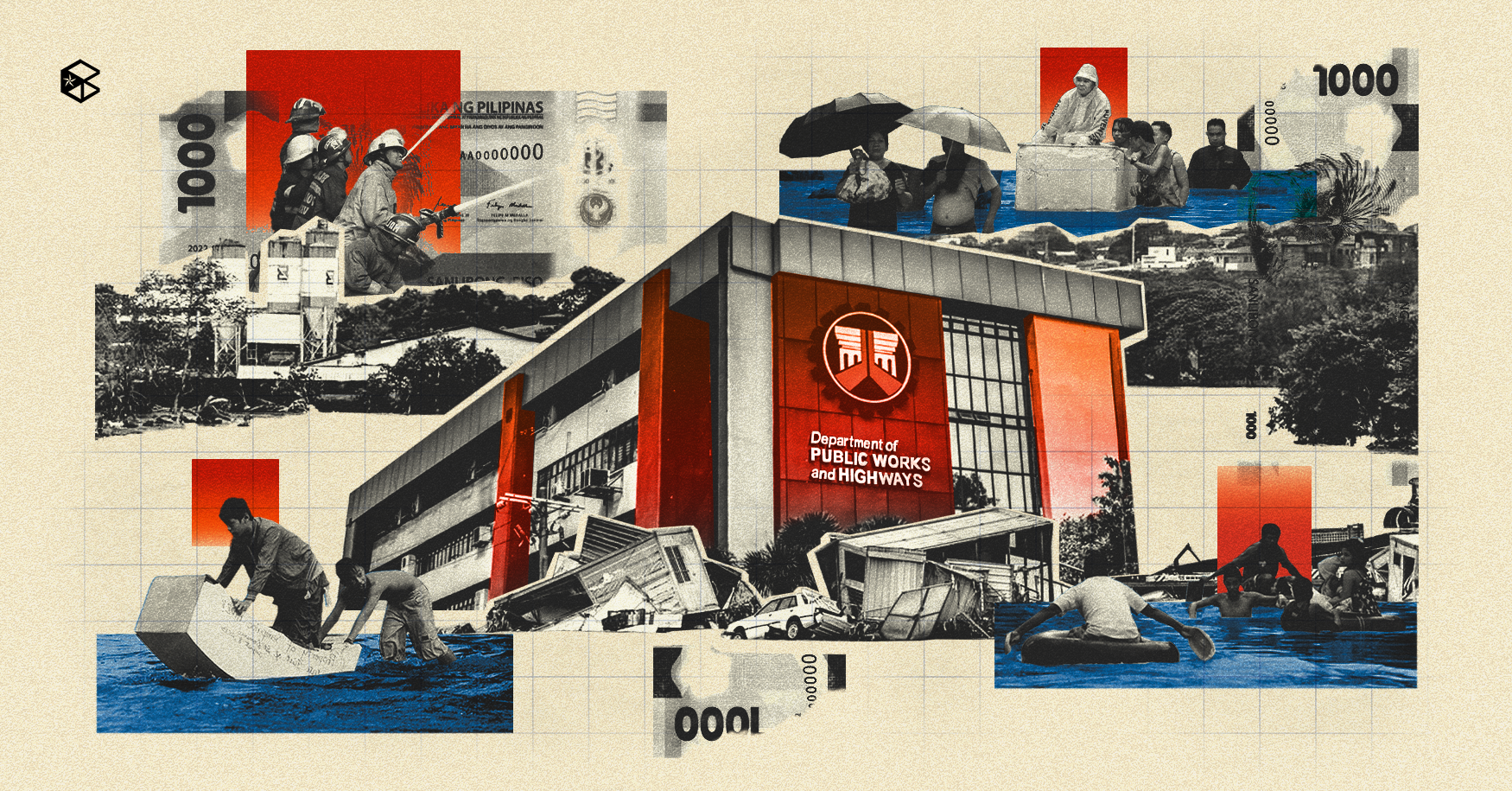If the very structures meant to keep Filipinos safe crumble in floods and quakes alike, what else must fall before justice and accountability stand?
As early as Sept. 9, the Department of Public Works and Highways (DPWH) Secretary Vince Dizon suspended all flood control projects in Oriental Mindoro following the discovery of irregularities in a ₱3-billion flood control project in Brgy. Tagumpay, Naujan.
Despite a reported 100% completion rate, the project remains visibly unfinished after consuming ₱675 million in its first phase (2023) and ₱2 billion in the second phase (2024). Oriental Mindoro has received around ₱39 billion for flood control projects from 2023 to 2025, raising concerns over how funds are being used.
On Sept. 14, Senate Finance Committee Chair Sherwin Gatchalian clarified that funding for flood control projects would continue through unspent budgets. President Ferdinand “Bongbong” Romualdez Marcos Jr. supported this, noting that no new flood control items will be added in the 2026 national budget until unutilized funds are fully exhausted.
Holding accountable those who built what failed
Bagong Henerasyon (BH) party-list Representative Robert Nazal claimed that ₱1.3 trillion in public funds have been lost to corruption in DPWH projects within four years. Although Annabelle Tungol, a master environmental auditor and licensed chemical engineer leading the Australia-based Artea Green Ventures, denied claims of “ghost projects,” and she admitted that serious performance gaps persist.
By Sept. 16, the Anti-Money Laundering Council (AMLC) froze the assets of individuals linked to these anomalies, while the DPWH sought assistance from agencies such as the Land of Transportation Office (LTO), Land Registration Authority (LRA), Civil Aviation Authority of the Philippines (CAAP), and Maritime Industry Authority (MARINA) to trace their properties.
The government also created the Independent Commission for Infrastructure, chaired by former Supreme Court Justice, Andres Bernal Reyes Jr., to investigate the misuse of funds.
In a memorandum dated Sept. 19, Dizon ordered the immediate implementation of the decision of Acting Ombudsman, Dante Vargas, on suspending 16 DPWH personnel from Bulacan 1st District Engineering Office to prevent the concerned personnel from influencing the ongoing investigation, as well as safeguard public records and ensure that accountability can proceed without obstruction.
Disaster strikes where integrity cracks
Earlier this year, on Jan. 23, a magnitude 5.8 earthquake struck San Francisco, Leyte, damaging buildings and roads near its epicenter and recording 45 aftershocks.
Then, on Sept. 30, a magnitude 6.9 earthquake rocked Cebu and neighboring provinces, registering Intensity VII (Destructive) in several towns. The death toll climbed to 73, according to the Office of Civil Defense (OCD).
Just days later, a 5.1 aftershock hit Cebu on Oct. 3, followed by another 5.1 quake in Negros Occidental on Oct. 7.
At the same time, Taal Volcano has been stirring since Aug. with Philippine Institute of Volcanology and Seismology (PHIVOLCS) warning pressure build-up and increase in seismic activity, maintaining Alert Level 1 but urging local governments to prepare for a possible eruption.
When the ground trembles or the waters rise, all eyes turn to DPWH, not because it leads the disaster response, but because every cracked bridge, every flooded highway, and every impassable road is a test of its integrity.
DPWH’s mandate in floods is direct: build, reinforce, protect. In earthquakes, it is supportive but crucial: ensure infrastructure is resilient, clear roads, rebuild swiftly. If the DPWH fails to uphold transparency and quality in its projects, the consequences extend beyond wasted funds. Bridges risk collapse, evacuation routes become death traps, and lives are endangered when disaster strikes.
As investigations into the alleged “ghost” projects dragged on, so did public outrage. The call for accountability has grown louder, no longer confined to political halls, but echoing across campuses and city streets.
From campuses to city streets, Filipinos have taken their outrage over the flood control corruption scandal through movements such as “Baha sa Luneta” and “Trillion Peso March” rallies, meanwhile, students and faculty from universities organized mass walkouts. Across these actions, the message was clear: public frustration over corruption has reached a breaking point, turning collective anger into a nationwide demand for accountability.
Yet while anger rises in the streets, grief unfolds in the rubble. Beyond the chants and raised placards, the true cost of negligence is paid by those who have no voice left to protest.
Echoes of what was left in the ruins
In Bogo City, a 17-year-old lady became a symbol of selfless courage when the 6.9-magnitude quake struck. As tremors ripped through her home, she rushed back inside to shield her mother and infant sibling, only to be buried beneath the rubble.
Along the highway of Barangay Don Gregorio Antigua in Borbon, Cebu, survivors stood beneath the sun, holding up placards that read, “Tubig lang po.” One of them is Marilyn Bedrejo, whose plea for water captured the desperation of those who had lost their homes and livelihood overnight. “We just need food, water, and rice,” she said in Emil Sumangil’s report on 24 Oras.
Meanwhile, survivors huddled under makeshift shelters and plastic sheets, lining the roads of Medellin and Bogo, too afraid to return home. They slept beside livestock, shivering through the night, clutching what little they had left. Their cries, drowned by rainfall, echoed a truth too long ignored, our systems are failing the very people they were built to protect.
These are only a few of the stories left in the wake of the Cebu earthquake—lives lost, families broken, and communities struggling to rise again. Every life lost to negligence, every home washed away or buried in rubble, is a debt the nation must answer.
This is no time for clout or jokes. It’s time to confront the rot that has weakened the very foundations meant to protect the people—and to demand the justice, competence, and compassion that every Filipino deserves.


